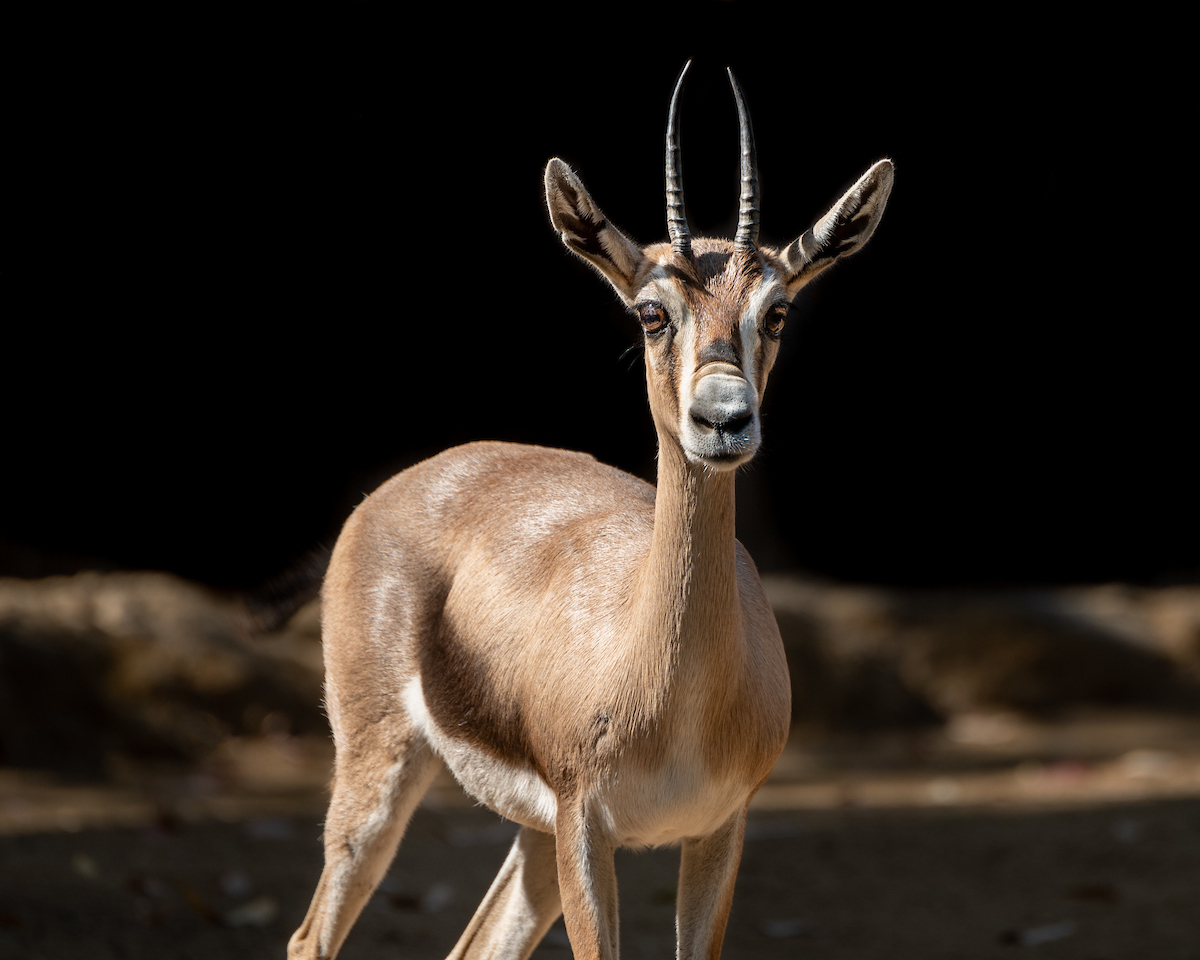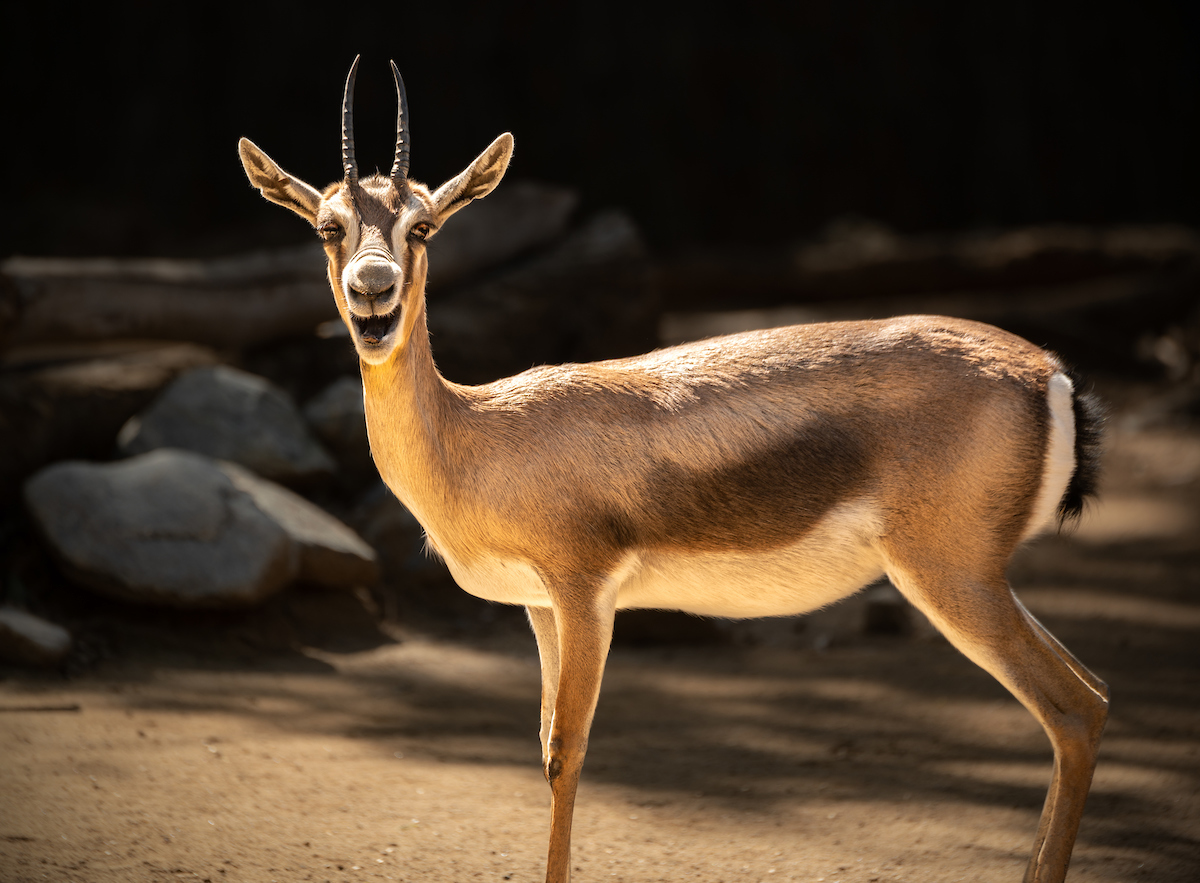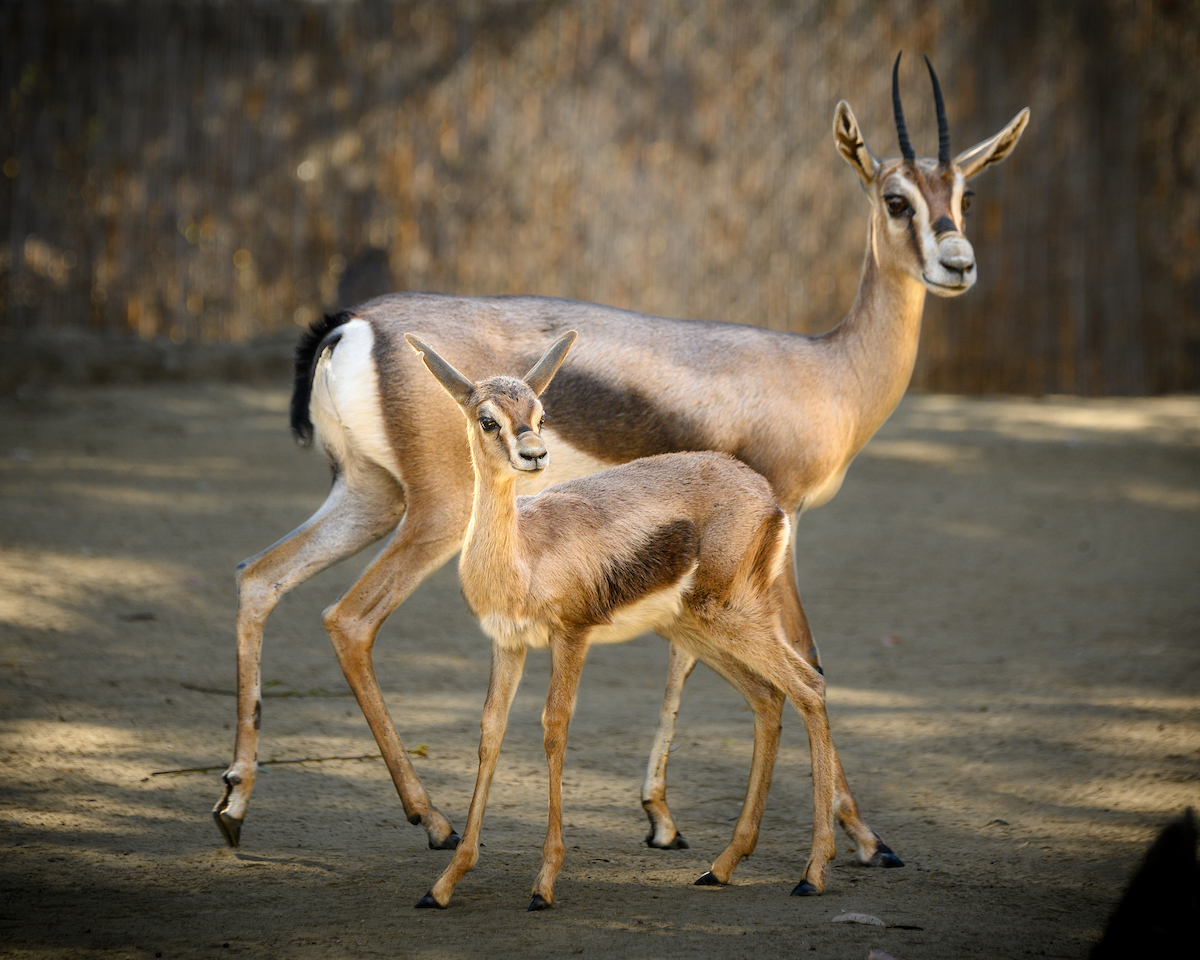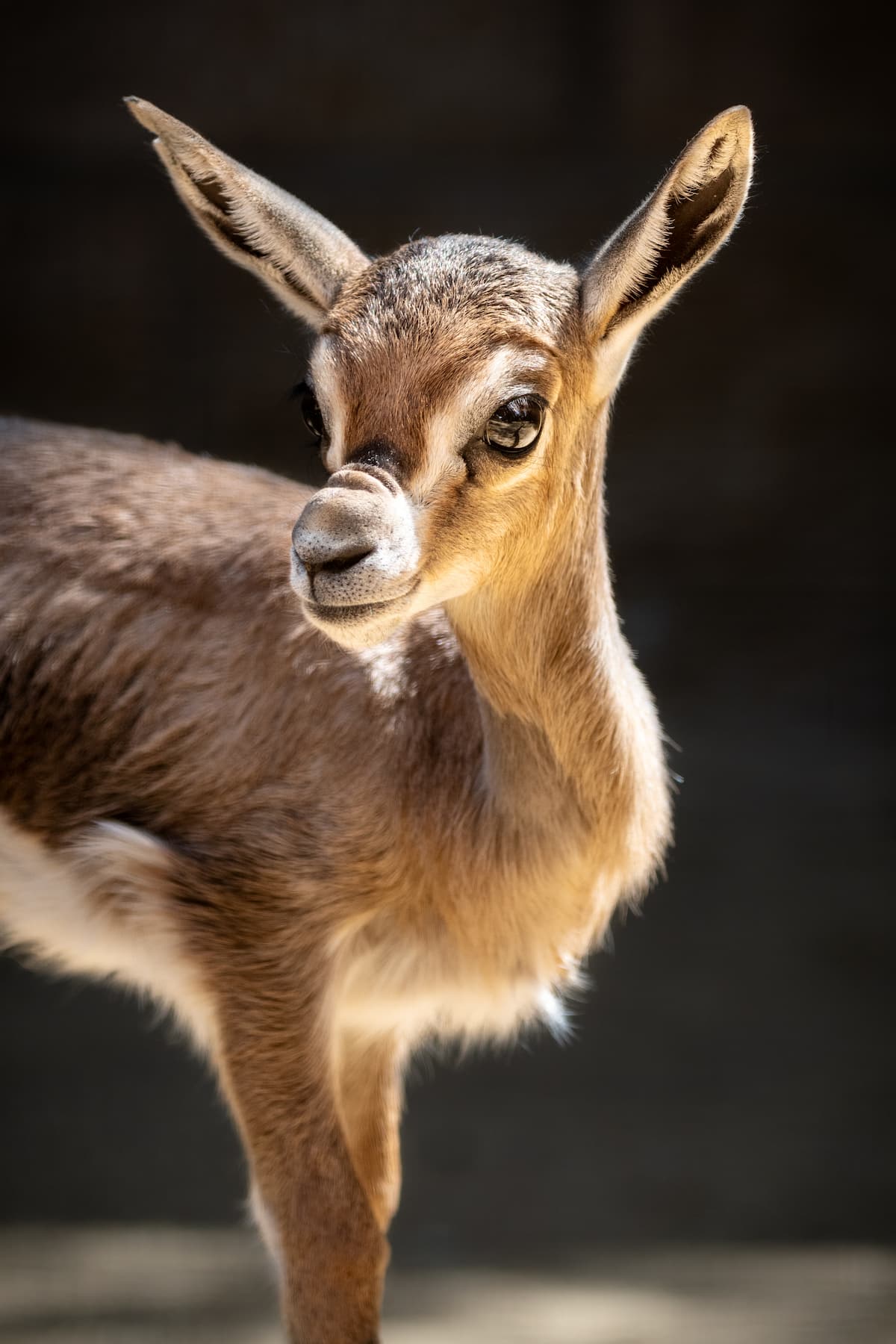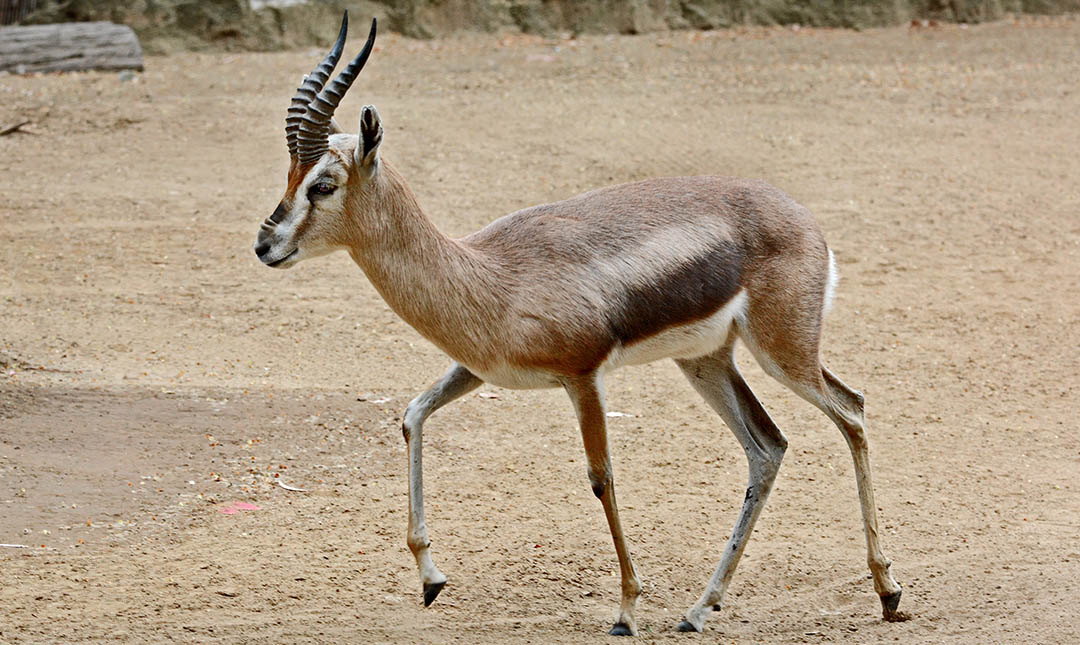About
Speke’s gazelles have many adaptations that allow them to live in harsh, semi-desert areas of Africa. The most distinctive trait of these shy creatures is their ability to inflate the skin on top of their noses to the size of a baseball, amplifying their honking alarm call. This feature also helps them regulate their body temperature, cooling their brains and preventing them from overheating, a condition that can be deadly. Like many desert-dwelling mammals, the gazelle’s belly is white, helping to deflect heat rising from the desert sand. Dark stripes near the eyes and down the front of the muzzle are thought to reduce glare from the sun (much like the eye black used by athletes). They are most active at dawn and dusk when temperatures are cooler.
Speke’s gazelles live in small groups of five to as many as 20 animals. These may consist of females and their young, bachelor groups, or a dominant male and his harem of females during the breeding season. When they are alarmed, Speke’s gazelles use a “pronking” behavior, which involves leaping in the air with an arched back and stiff legs. Some theorize this display sends a message to predators that the gazelle is strong and not worth pursuing. Predators include cheetah, lions, wild dogs, leopards, hyenas, pythons, and humans.
The major obstacles that this species faces are competition with domestic livestock for limited grazing, continuous hunting pressure, and the effects of warfare in the region. Field research has been limited for decades due to the region’s instability.
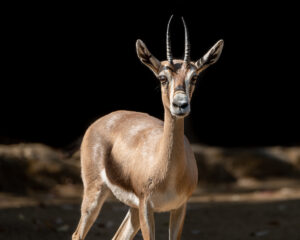
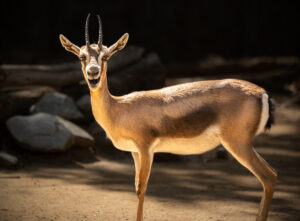
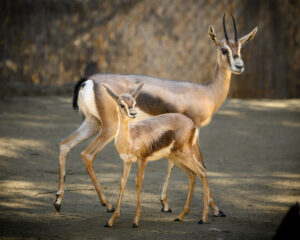
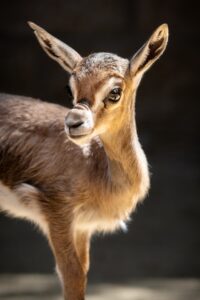
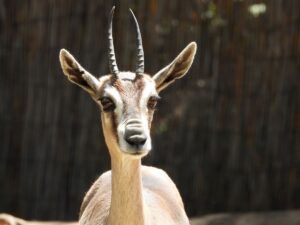
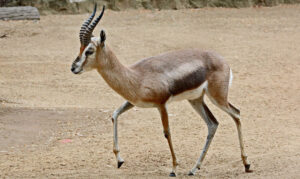
Status
The major obstacles for this species’ survival are competition with domestic livestock for limited grazing, continuous hunting pressure, and the effects of warfare in the region. Field research has been limited for decades due to the region’s instability. Westerners believed that the species was virtually extinct by the 1980s. Although that proved to be false, the St. Louis Zoo had the only breeding population of Speke’s gazelle in North America. By 1983, other zoos, including the Los Angeles Zoo, joined the Species Survival Plan (SSP) to help propagate the species.
Habitat
Speke’s gazelles are found in open, semi-desert plateaus of Somalia. They may be extinct in Ethiopia.
Diet
These browsers feed in the early morning. In their very arid habitat, dew rarely accumulates, and predawn feeding gives these animals the highest moisture content from the foliage they consume.
Physical Characteristics
Small and fragile looking, Speke’s gazelle are fawn-colored with a distinct black flank, and a paler band above it. Like many creatures that live in the desert, the gazelle’s belly is white, helping to deflect rising heat from the desert sand. Its face is light beige with dark stripes near the eyes and down the front of the muzzle, thought to function like the blackened eyes of baseball players to reduce glare from the sun. Body length is about three feet, and they stand two feet tall at the shoulder. Weight is 25 to 40 pounds. Their horns are 12 to 15 inches long. Lifespan is up to 12 years.
LOCATION WITHIN THE ZOO
You’ll find this animal in the Animals of the Drylands section. See Zoo Map.

